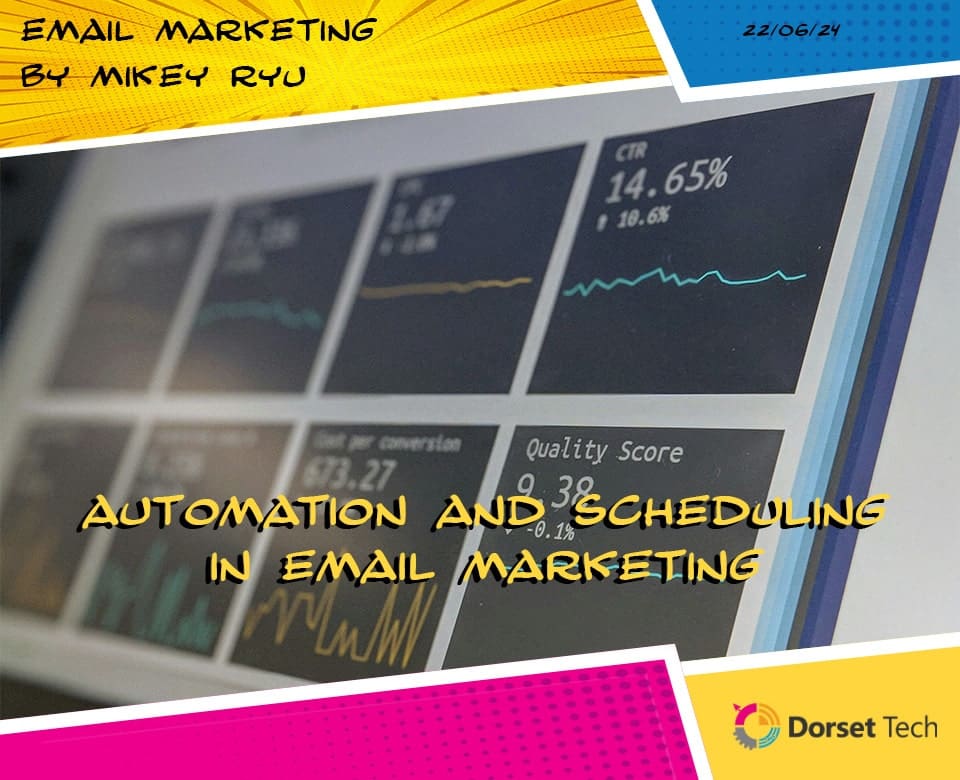
Crafting Your Comprehensive Outbound Marketing Plan
Crafting Your Comprehensive Outbound Marketing Plan: A Step-by-Step Guide
Creating a robust outbound marketing plan is pivotal for businesses aiming to proactively connect with their target audience and drive tangible results. This step-by-step guide, inspired by the commitment to value for money exemplified by Dorset Tech, will help you craft your own effective outbound marketing plan tailored to your business objectives.
1. Define Clear Objectives:
The foundation of any successful outbound marketing plan lies in defining clear and measurable objectives. Ask yourself: What do you want to achieve with your outbound efforts? Whether it’s generating leads, increasing brand awareness, or driving immediate sales, having specific goals will guide the entire planning process.
Example: Lead Generation Objective
If your objective is lead generation, define specific targets such as the number of leads you aim to generate, the conversion rate from leads to customers, and the timeframe for achieving these goals.
2. Understand Your Target Audience:
A deep understanding of your target audience is crucial for tailoring your outbound messages effectively. Develop detailed buyer personas that encompass demographics, preferences, pain points, and communication channels. This ensures that your outbound efforts resonate with the unique needs of your audience.
Example: Persona Development for Email Marketing
For an email marketing campaign, segment your audience based on factors such as location, age, or previous interactions. Create personalized content that addresses the specific needs and interests of each segment.
3. Choose the Right Outbound Methods:
Selecting the appropriate outbound methods is key to reaching your audience effectively. Evaluate the nature of your business and the preferences of your target audience to determine which methods will yield the best results. Whether it’s cold calling, email marketing, direct mail, or a combination, strategic selection is essential.
Example: Diversification for a Holistic Approach
Consider diversifying your outbound methods for a holistic approach. For instance, combine cold calling for direct communication with email marketing for targeted messaging. This synergy can enhance the overall impact of your outbound plan.
4. Craft Compelling Messages:
The success of your outbound plan hinges on crafting messages that captivate your audience. Clearly articulate the value your product or service brings and how it addresses the specific needs of your audience. Strive for concise, compelling, and personalized messaging that resonates.
Example: Personalization in Direct Mail
In a direct mail campaign, personalize your messages based on the recipient’s preferences or previous interactions. Incorporate creative designs and a clear call to action to enhance the overall impact of your message.
5. Develop a Content Calendar:
Organize and schedule your outbound activities with a well-structured content calendar. This ensures that your messages are timely, relevant, and aligned with broader marketing initiatives. Consistency in messaging and timing is crucial for building a cohesive brand presence.
Example: Timing Considerations in SMS Marketing
For SMS marketing, carefully consider the timing of your messages to maximize engagement. Tailor your timing based on the characteristics and behaviors of your audience to ensure the highest impact.
6. Allocate Budget and Resources:
Determine the budget and resources required to execute your outbound plan effectively. Allocate resources based on the priorities and potential returns of each outbound method. Efficient resource allocation ensures that your outbound campaigns are cost-effective and impactful.
Example: Budget Allocation for Cold Calling
Allocate resources for training your cold calling team, acquiring necessary technology, and refining scripts. A well-prepared team armed with the right tools can significantly enhance the effectiveness of your cold-calling efforts.
7. Implement Tracking and Analytics:
Integrate robust tracking and analytics systems to measure the performance of your outbound campaigns. Key performance indicators (KPIs) such as conversion rates, open rates, and response rates provide valuable insights for refining and optimizing your strategies.
Example: Analytics for Email Marketing
For email marketing, analyze open rates, click-through rates, and conversion rates. Use this data to identify trends, successes, and areas for improvement, allowing for continuous optimization of your email campaigns.
Conclusion: Your Tailored Outbound Success
Crafting your own outbound marketing plan is a dynamic process that requires thoughtful planning and continuous refinement. By defining clear objectives, understanding your audience, choosing the right methods, crafting compelling messages, implementing a content calendar, allocating resources wisely, and implementing robust tracking, you can create a tailored plan that aligns with your business objectives and drives meaningful engagement. Inspired by the commitment to value for money exemplified by Dorset Tech, your outbound marketing plan will serve as a roadmap for success, connecting your business with your audience and propelling you towards sustainable growth.





















